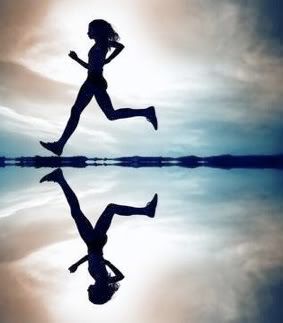Posted by
geoge soros |
9:55 AM

When it comes to running, we can think of all forms of preparation to aid our training. Has anyone really thought of undergarment as one of the factors? Women perhaps are more knowledgeable than men in this regard. Most women who run would know the benefits of wearing a sports bra. However, less people will think of choosing a suitable pair of panties, boxers or briefs for their run. The fact is, undergarment plays an important role in enhancing our running experience. Let's take a look at some of the common runners' problems that can be prevented or lessened when u choose the right undergarment.
Nipple abrasion is a common ailment that plague long distance runners. The frequent rubbing of your t-shirt or singlet or even bra, coupled with large amounts of perspiration, may cause chafing of skin directly under the clothing. It can get quite uncomfortable and painful. To prevent this, females can pick a suitable sports bra to provide support to your breasts and limit the extent of abrasion. There really is a generous range available for females out there. The general advice is: choose comfort and light-weight. You can look for the aesthetics like colour and design when the first 2 criteria has been met. Most sports bras thesedays come in easy-to-dry material that are a mix of fabric and nylon or polyester. This is good as perspiration dries quickly in these material and helps reduce the abrasive potential of the bras. For males, taping the nipples using cloth surgical tape is the best solution against nipple abrasion. The most simple way is to tape an 'X' on each nipple. Try not to use plastic or elastic tape as these may slip off under the heavy perspiration.
Chafing is also a pain in the ass (literally for some). It usually occurs in regions where there is more contact between body parts. In between the thighs, between the butt, the armpits, the chest and the belly (if you have one) are some of the common places that are susceptible to chafing. For runners who are more chubby, you are likely to experience chafing more often. In this situation, the choice of undergarment would determine the extent of the chafing. For males, boxers are generally a no-no because of the loose flaps of cloth that might exacerbate the rubbing. Briefs that fit well with sufficient breathing ventilation is good. As long as the material is light and allows easy drying, it would increase the comfort during running. For females, pick a snug fit of underwear that is not too large or loose. This minimises excessive 'running' of the underwear during repeated hip and leg movement during your running strides. For both genders alike, g-string is definitely unacceptable for running. The 'string' would become a cutting saw under the wet and hot conditions when u run and the consequent abrasion can be quite bad.
Increasingly, runners are turning to tights as an alternative to undergarment during a race. Tights are basically body-hugging shorts or suits that limits the amount of abrasive contact between the undergarment and your skin. Some prefer tights because the smooth and elastic surface allow more fluid movement of the limbs as you run. A point to note is that tights come in all shapes and sizes. Choose a cutting that is less restraining for you. Paddings and thicker material may be inserted in some tights as well. You should assess if you're used to the feeling of wearing such tights, especially over long periods of time. Some tights are designed for cyclists, biathletes or triathletes. The seams are sewn to facilitate different movement ranges so do check with the store assistants before your purchase!
A handful of the more adventurous may choose not to wear undergarments at all. Well for these runners, the ownest really is on themselves to decide whether the benefits do outweigh the disadvantages. Depending on indivdual skin types, some people might have developed tougher skin that can stand more rubbing. So remember, choose wisely!



![]()













